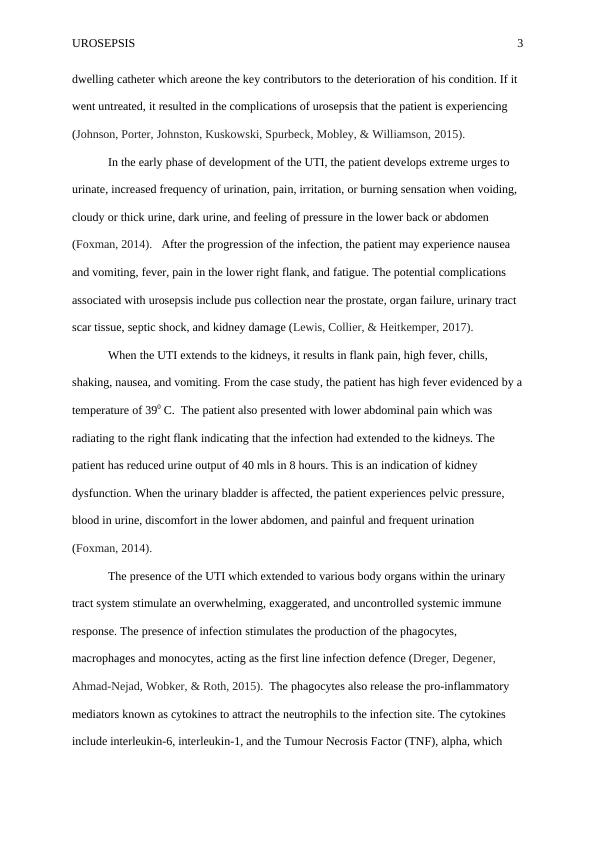Urosepsis: Pathogenesis, Nursing Strategy, and ABG Analysis
Analyzing a case study of a complex critical care patient, selecting a nursing strategy, analyzing arterial blood gas results, and demonstrating academic writing skills.
8 Pages2294 Words341 Views
Added on 2022-11-29
About This Document
This article critically analyzes the case scenario of urosepsis, discussing the pathogenesis, nursing strategy, and ABG analysis. It also explores the risk factors and complications associated with urosepsis.
Urosepsis: Pathogenesis, Nursing Strategy, and ABG Analysis
Analyzing a case study of a complex critical care patient, selecting a nursing strategy, analyzing arterial blood gas results, and demonstrating academic writing skills.
Added on 2022-11-29
ShareRelated Documents
End of preview
Want to access all the pages? Upload your documents or become a member.
Case Study on Urosepsis
|6
|1636
|94
Understanding the Pathogenesis of Urinary Tract Infection and Sepsis
|7
|2026
|1
Urosepsis: Pathogenesis, Nursing Strategy, and Analysis of Arterial Blood Gases
|7
|1868
|95
A Case Study on Urosepsis
|7
|1800
|84
Urinary Tract Infection with Sepsis
|9
|2174
|59
HEALTH VARIATION.
|7
|2153
|20



